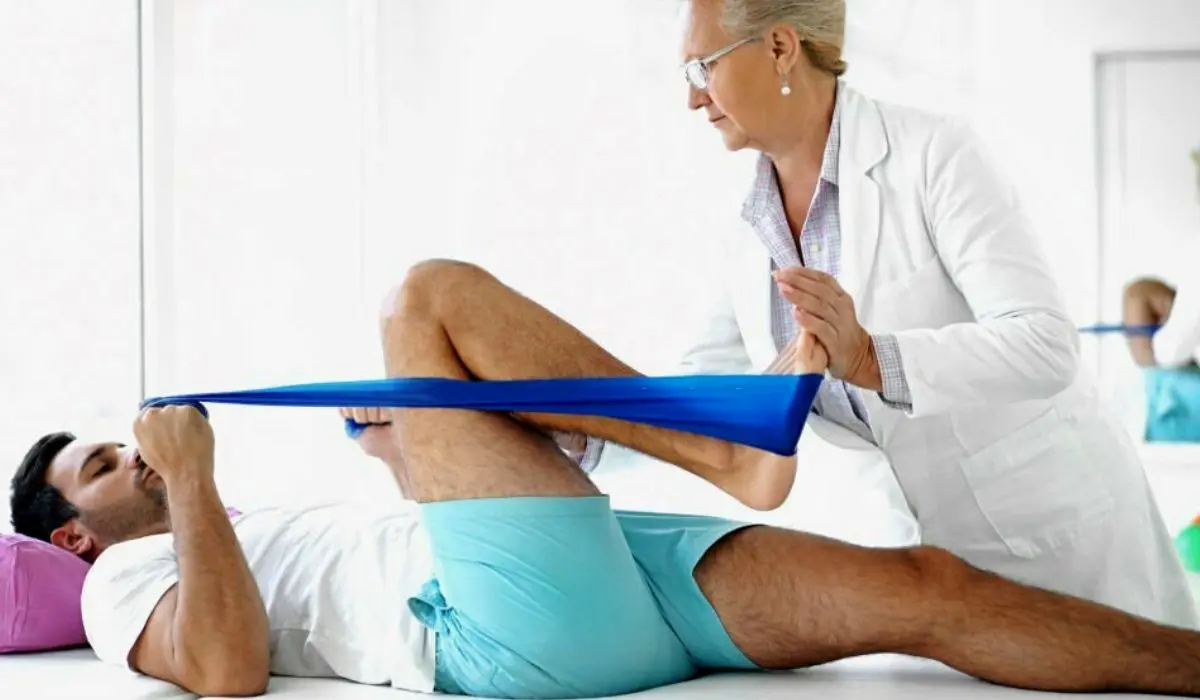The pain and swelling following tendon injuries and the increasing concerns surrounding the same, coupled with the increasing fear of their recurrence, have kindled the need to explore further treatment options that besides providing the needed (or even permanent) relief, will also serve to prevent recurrence in the future.
There has been a continuous lookout for emerging therapies to effectively treat tendon injuries as could be deliberately stated. While these therapies are meant to serve the needed purpose, considerations are also directed at analyzing their pros and cons before deciding on the one that will provide the most amount of benefit with the least drawbacks.
The Science Of Tendon Injury
🔶 Tendon Injuries – Causes And Symptoms
If it could be explained in simplest ways, tendon injury for the most part, refers to the one caused by a tear or rupture to the soft tissues connecting the muscles and the bones. When this happens, there abruptly follows pain and swelling to the affected area and those surrounding it.
From a functional standpoint, both tendons and ligaments serve as fibrous connective tissues, and it is these elements that help the muscles and joints to move. Even though both of them together account for soft tissues, they both serve different structural functions. While the ligaments attach bone to bone, the muscles and bones are connected by the tendons.
Having understood the physiology of the tendons and ligaments from the explanation provided above, it would be convenient to state that the way these soft tissues attach themselves to bone-to-bone and muscles-to-bone, limits them from stretching past their accepted limit.
Thus, even though they are credited with helping the various muscles and bones to move, stretching beyond what is permissible of them is what results in their rupture or injury. Interestingly enough, it has been discovered that while sprains and tears are related more to ligament injury, strains and tears are most happening with the tendons.

The tendon and ligament tears are highly common in sports and the chances of their occurrences in situations or contexts other than the stated cannot be ruled out whatsoever. The pain and swelling in each of these cases are unbearable to the point of seeking urgent medical attention and further treatment/procedures.
Note that if the condition of the patient sustaining the sprain/strain and tears is severe, this may indeed warrant surgery to address such an issue.
🔶 Causes Of Tendon Injury
Any kind of traumatic injury can cause a tendon or ligament to tear. Besides this, there are others, which include:
- A sudden impact on the joint
- A quick stop or start
- A sudden movement in the joint
The other major risk factors associated with tendon (and ligament) injury include the following:
- Age: When it comes to age, adults are more prone to sustain tendon and ligament injury. Compared to grownups, children carry the rare likelihood of injuring these soft tissues.
- Gender: In terms of ligament injury, women are more at risk of developing one against their male counterparts.
Ever wondered why this article which concerns mostly with tendon injury, also speaks of ligament? The reason already stated both of them serve as soft connective tissues, binding the muscles and bones together to assist in body movement and stretching. Any harsh impact on one will likely affect the other.
🔶 Signs And Symptoms Of Tendon Injury
Tendinopathy, the other name for tendon injury, carries the following symptoms:
- Pain, swelling, redness, warmth, and tenderness in the area surrounding the injured tendon.
- Crepitus, i.e., a crunchy sound and feeling when the tendon is used/injured/sprained.
- Pain and stiffness that are worse at night or in the early morning when trying to get up.
- Stiffness of the joint in the surrounding area.
In addition to these, a ruptured tendon will consist of the following signs:
- A feeling of a snap or pop to the tendon is used followed by severe pain.
- Rapid bruising with marked weakness.
- Difficulty with weight bearing.
- Deformity in the concerned area.
Read More:- The Mental Aspect Of Athletes Towards Injuries: Coping With Injuries
Emerging/New Therapies For Tendon Injuries
🔶 PRP (Platelet-Rich Plasma): Recognized as one of the best newcomers in the genre of therapies to heal tendon injuries. However, since the study did not utilize any human sample, this will require further proof/evidence.
Nevertheless, the effectiveness of PRP in terms of its delivery mechanism to treat tendon cells cannot be denied. The collagen stimulatory delivery system that is PRP, can likely enhance the healing of tendons by working on reducing the inflammation.
Doing so will encourage the proliferation and maturation of the tendon cells. It should be noted here that there remain concerns regarding the conflicting results on the benefits of PRP for the type, location, and intensity of the tendon injury.
Additionally, the effectiveness of the PRP has been deemed inconclusive because of insufficient information regarding appropriate concentrations, timing, and administration protocols.
🔶 Growth Factor/Gene Therapy: Platelet-derived growth factors (PDGF), basic FGF (bFGF), insulin-like growth factor (IGF-1), BMP-12, and cartilage-derived morphogenetic proteins (CDMPs) have been known to play key roles throughout the healing processes of the wound sustained by some soft tissues.
Moreover, the healing processes are enhanced by the upregulation of these factors, which in turn influence cellularity, cell migration, proliferation, and regulation of immune response.
By manipulating delivery concentration and timing of the aforementioned growth factors at the site of the injury, it can be ascertained that these will provide the desired healing effect, thereby contributing efficiently to ongoing research.
Conclusion
Having had a thorough discussion on tendon/ligament injury, the mechanism, and risk factors causing the same, studies detailing on the emerging therapies to cure the condition suggested PRP and Growth Factor/Gene Therapy.
Among these, and due to the consequences associated with the former, it can be conveniently stated that the Growth Factor would hopefully provide the expected outcomes due to the presence of elements that will effectively work on tendon regeneration.